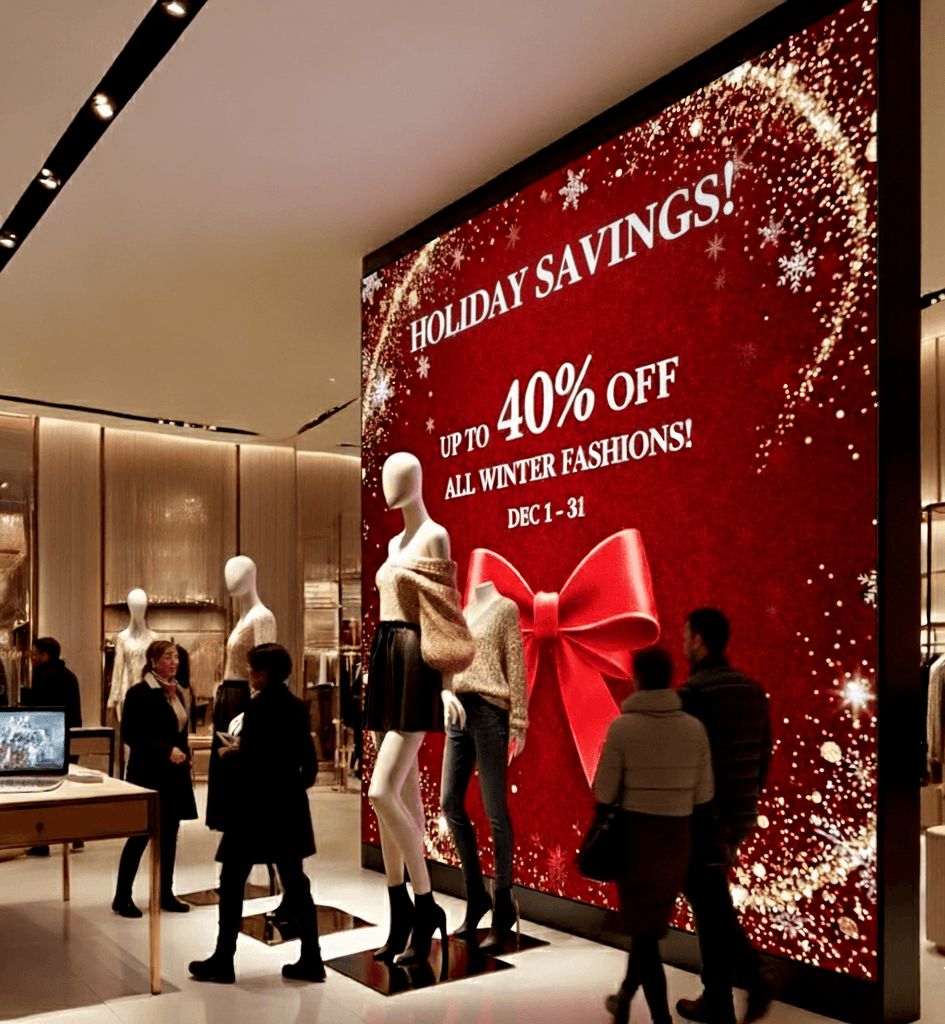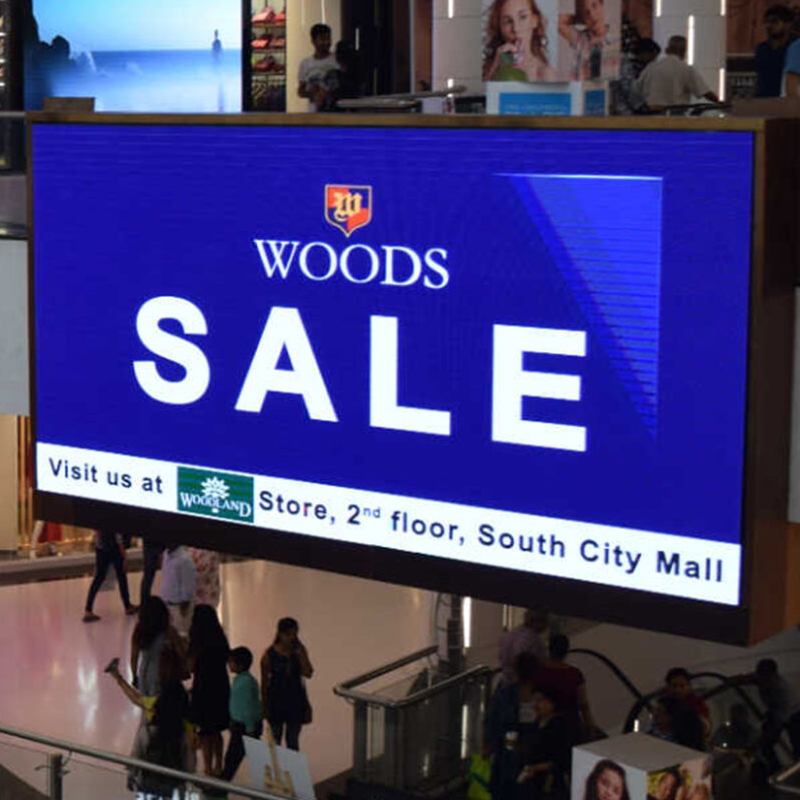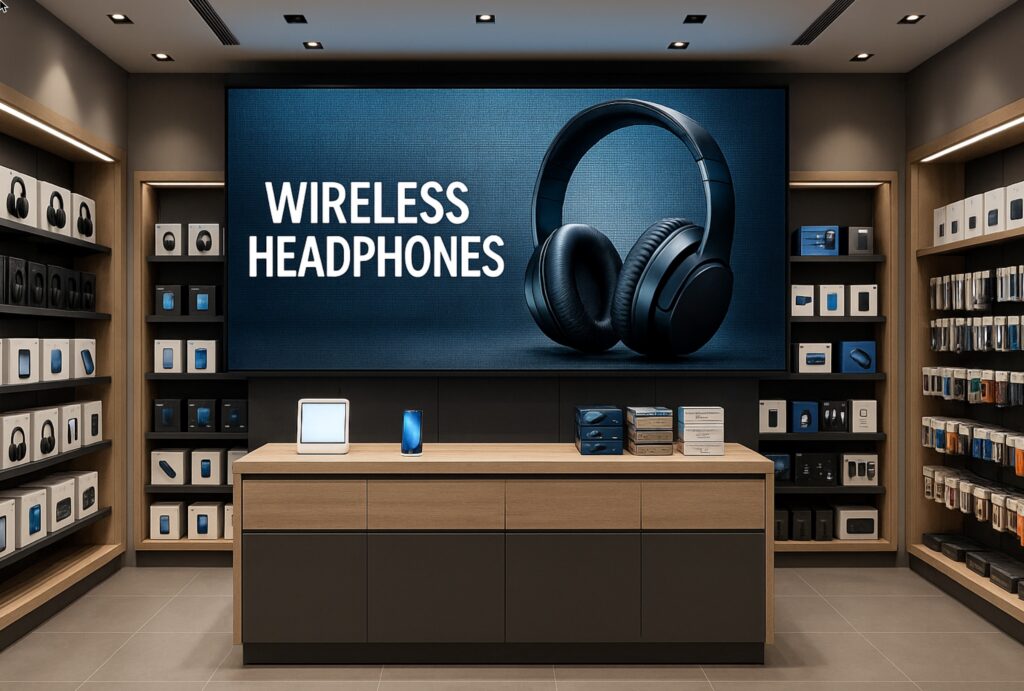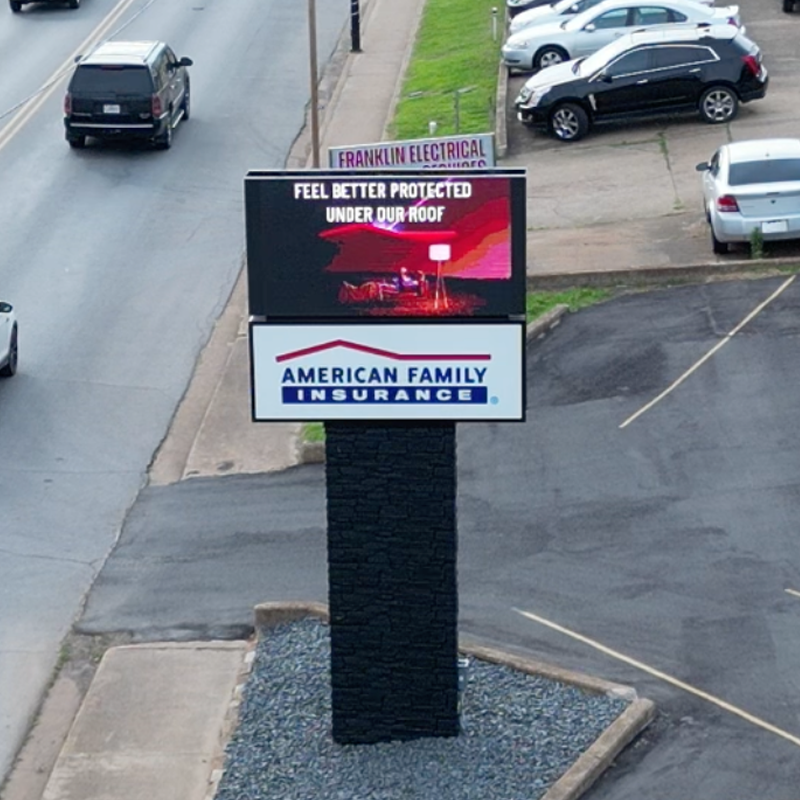YesRetailers use LED displays to guide shoppers, highlight promotions, and create a more engaging in-store experience. Yet many businesses still wonder where these screens should go. Placement affects visibility, traffic flow, and how customers react to the message. The right location can increase sales, while the wrong location can make the display easy to ignore.
Digital signs work best when they support how people naturally move through a store. They should spark interest, answer questions, or help shoppers decide faster. Entrance signs, aisle displays, and counter screens all play different roles in the buying journey.
Understanding those roles helps retailers use LED displays more effectively and connect customers with the products they want to promote.

Entrance Signs Draw People Into the Store
The entrance is one of the highest-value spots for LED displays. Research shows that 76% of shoppers have entered a store because digital signage caught their attention near the entrance. That number alone explains why storefront displays matter so much. They operate like a visual invitation and give customers a reason to step inside rather than walk past.
Bright motion catches the eye, especially when people approach from a sidewalk or parking lot. LED displays in storefront windows can highlight new arrivals, seasonal items, or daily deals. They can also create a welcoming feel before the shopper even reaches the door. Because people form first impressions quickly, entrance signs help shape how customers view the entire store.
Window-Facing Signs Reach Both Inside and Outside Traffic
Many retailers place LED displays inside the front windows, facing outward. This placement can grab attention outside the store while still benefiting people already inside. Shoppers who enter the store may glance at the display again, reinforcing the message. This repetition strengthens brand recall and helps featured items stay top of mind.
Window displays are especially useful for stores in high-traffic areas. When shoppers see something interesting, they often feel more curious. That curiosity increases the chance they will stop, enter, and explore. Because LED displays update quickly, retailers can adjust messages throughout the day without changing physical signage.

Aisle and Mid-Store Displays Guide Customer Behavior
Many customers walk into a store without a plan. They browse, wander, and make decisions on the spot. Mid-store digital signs help guide that behavior by showing product ideas, comparisons, and quick explanations. They also drive traffic toward areas retailers want to highlight.
LED displays placed along wide aisles or near transition points keep customers moving deeper into the store. Movement increases exposure to more products, which increases the chance of additional purchases. These screens also help customers understand promotions before they reach a product.
A mid-store screen gives retailers space to educate, suggest, or inspire. Because shoppers read signage while they move, these displays should deliver simple messages that encourage the next step, not overwhelm them with details.

Why Distance Matters: Promoting Products Farther From the Screen Works Better
One surprising insight from retail research is that digital signs are often more effective when the promoted product is not directly next to the screen. Shoppers respond better when the item is located a few aisles away rather than right under the display. This happens for a few reasons.
When a product sits directly beside the screen, customers know exactly what the store wants them to see. The message feels obvious. It feels like pressure, not guidance. People notice the screen, but they often walk past the product without engaging.
However, when the LED display promotes an item located farther away, the experience feels more natural. A shopper sees the image or message, grows curious, and then moves toward the section where the product is displayed. This shift from “being told” to “discovering” changes the entire shopping experience.
And that movement matters. When customers walk through the store, they pass more shelves, see more products, and spend more time browsing. That leads to higher basket sizes and stronger interest in the promoted item. LED displays become directional cues rather than advertisements sitting on top of a product. They serve the shopper, not the shelf.
This insight is especially useful for seasonal products, high-margin items, and anything placed deeper inside the store. An LED display can act like a pointer that encourages exploration and increases overall engagement.

Checkout Displays Support Add-Ons and Impulse Purchases
LED signs near the checkout area work differently from entrance or mid-store displays. Customers here are ready to buy. They are in decision-making mode and are open to quick suggestions. Screens behind the counter can promote impulse items, service upgrades, loyalty programs, or limited-time offers.
A well-placed checkout display reduces perceived wait times, which improves customer satisfaction. It also keeps shoppers engaged while they stand in line. Even short messages have strong impact because the customer is already focused on finishing their purchase.
This placement works well for small accessories, seasonal add-ons, and items that pair naturally with common purchases. Although these screens do not drive exploration like mid-store displays, they help boost the final transaction value.
High-Traffic Zones Create Natural Opportunities
Retail stores have a few predictable traffic points: entrances, wide aisles, transitions between departments, and checkout lanes. Placing LED displays along these paths helps retailers meet customers where they already are. These spots get consistent visibility because people naturally slow down, turn, or stop.
High-traffic signage should deliver messages quickly because shoppers do not spend much time in these areas. Motion graphics or simple visuals work well. The screen’s job is to capture attention, reinforce promotions, and guide customers toward the next step.
The Right Placement Depends on the Goal
Retailers should choose LED display locations based on what they want the sign to achieve:
Entrance signs pull customers inside.
Window signs reach both inside and outside traffic.
Mid-store displays guide movement and reinforce curiosity.
Screens promoting distant products increase browsing and exploration.
Checkout displays encourage add-on purchases.
Because each location plays a different role, using multiple placements often gives the best results. A mix of strategic entrance, aisle, and checkout displays creates a consistent message from the moment a customer enters until they complete the transaction.
Why NEXT LED Signs Is the Right Partner for Retail Displays
When you’re ready to bring LED displays into your retail environment, Next LED Signs makes the process straightforward. Our indoor and outdoor displays deliver eye-catching brightness, clean visibility, and dependable performance. We match every sign with cloud-based controls that let your team update content anytime, from anywhere. If you’re exploring new ways to connect with shoppers or want to review options for an upcoming project, our team is here to help. Reach out for a quote or give us a call, and we’ll walk you through the best setup for your store.
FAQ: Best Places to Install LED Signs Inside Retail Stores
How can I position an LED sign to avoid glare and reflections from store lighting or windows? Glare often comes from overhead lighting, polished floors, or sunlight. You can reduce it by angling the LED sign slightly downward or placing it perpendicular to windows. Additionally, LEDs with higher contrast ratios stay readable under brighter conditions. You can also use indirect lighting around the display to prevent harsh reflections. Even small placement changes often improve visibility, because glare usually hits the screen from predictable angles.
- Which areas of a retail store are best for an LED sign to encourage impulse buys or cross-selling? Impulse activity peaks in three zones: checkout lanes, aisle entrances, and end caps. These locations interrupt shopper movement, which increases message attention. Data from retail behavioral studies shows that end-cap promotions can lift related product sales by 25% or more, because shoppers naturally slow down at these intersections. LED signs in these areas work well because they highlight products shoppers didn’t plan to buy but find appealing in the moment.
- Are there any common installation issues (like power or structural concerns) I need to plan for when choosing an indoor LED sign location? Indoor LED signs need stable power, proper ventilation, and secure mounting. Although indoor displays weigh less than outdoor units, they still require solid support when wall-mounted. Freestanding units avoid structural issues but still need electrical cable routing that keeps walkways clear. Additionally, you should confirm power load capacity on the selected circuit. Many issues come from placing a display where power access is inconvenient, so planning the location first helps avoid delays.
- How do I ensure the content on my LED sign is relevant to the customer’s location inside the store? Location relevance matters because shoppers respond to messages tied to what they’re already viewing. You can match content to the aisle by featuring nearby products, seasonal items, or promotions tied to that category. For example, an LED sign in a home-goods aisle can display storage ideas or sale bundles for related items. Because shoppers are already thinking about that category, timely content increases the likelihood of an immediate purchase.


